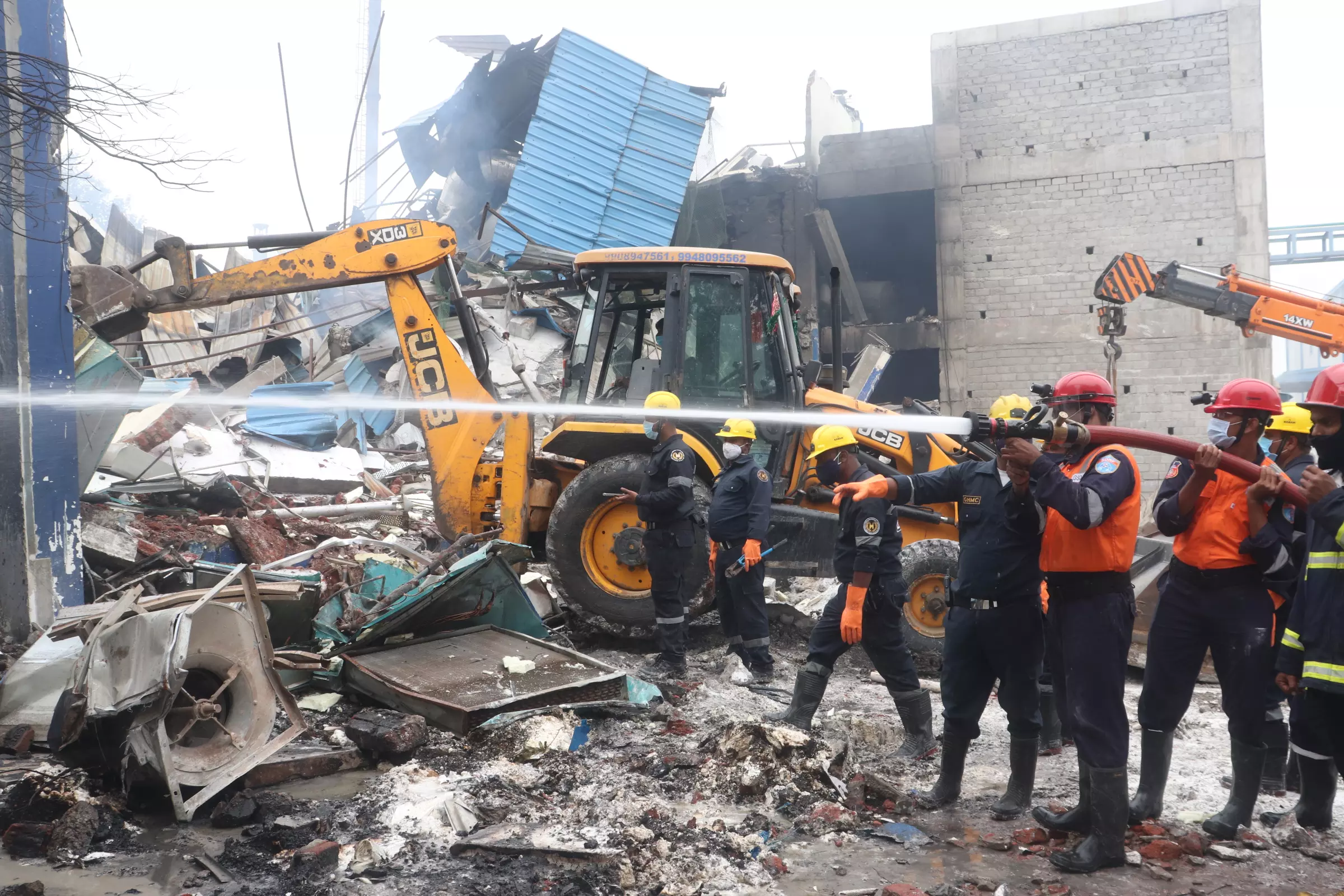AA Edit | Probe Telangana Factory Blast, Assess Safety Compliance
Telangana government, which has already ordered a probe into the matter, needs to fix responsibility for the current explosion

The death of over 35 people in an explosion at a pharmaceutical factory run by the BSE-listed Sigachi Industries is a stark reminder of how costly negligence can be when handling hazardous materials. The company is one of the largest manufacturers of microcrystalline cellulose (MCC) powder, which is used in pharmaceutical, food, cosmetic and industrial applications.
According to officials, the explosion was caused by a blast in the reactor, which caused the drying unit to explode, bringing down a three-storey building. While there is no official account of the exact cause, experts believe that finely powdered chemicals like MCC can form combustible clouds in confined spaces, leading to fire and explosions.
MCC has very low minimum ignition energy (MIE), which means it is highly combustible, and even a small static discharge or hot surface could ignite it. There could be three plausible causes for the explosion — friction in metallic parts of the dryer could result in localised heating; overheating could decompose MCC, releasing flammable gases or vapours; or there could have been dust accumulation in the dryer’s ducts.
Though a combination of all three factors may have caused the accident, the dust theory appears to be the most likely. If dust accumulates in filters, ducting or corners of the drying system, a minor explosion can shake and dislodge this settled dust. Once airborne, the dust can cause a secondary explosion, which is often far more destructive than the initial blast — likely the kind of explosion that brought down the three-storey factory building.
Factories dealing with hazardous materials are always prone to fire accidents or explosions. Two people were killed at an Aurobindo Pharma unit in Srikakulam, Andhra Pradesh in 2019, when ash powder blocked the boiler. A similar explosion was reported at a pharmaceutical plant in Mettupalayam, Tamil Nadu, in 2021, involving its drying unit. In the same year, a dust explosion at the Baddi industrial park in Himachal Pradesh injured five people.
In 2024, there were four such accidents — a blast at Dombivli in Thane, Maharashtra, killed 10 people and injured 64 in May; two blasts at firecracker factories in Virudhunagar, Tamil Nadu, in June killed 14 people and injured eight; and a chemical factory explosion in Anakapalli, Andhra Pradesh, in July left one dead and two injured.
Though the record of Indian companies has been better compared to China — where 19,600 people were killed in 21,800 industrial incidents in 2024 — the Telangana government, which has already ordered a probe into the matter, needs to fix responsibility for the current explosion.
Apart from identifying the cause of the explosion, the investigation must also address two major questions. Was the explosion caused by a lack of regulatory oversight? Or did it occur due to the negligence or shortage of employees?
Companies involved in the chemical and pharmaceutical sectors should re-train their employees and strengthen regulatory mechanisms — using an additional layer of artificial intelligence — to prevent human errors that could lead to the loss of lives. If companies adopt a lackadaisical approach to industrial and worker safety, insurance companies should reject their compensation claims.
